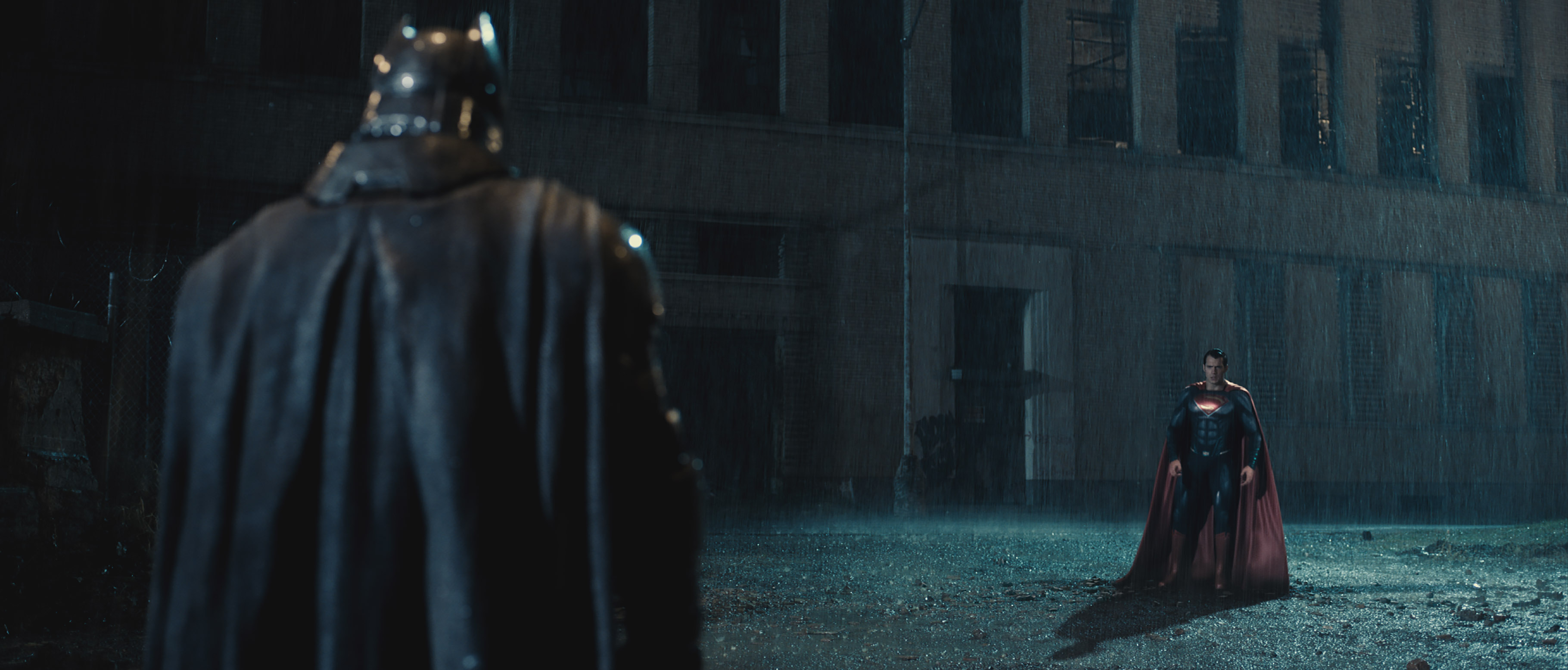Superman and Human Imperfection

2016 is becoming the year of Hollywood blockbuster films about superheroes fighting each other. Marvel’s Captain America: Civil War will be released later this month, and last week the first DC superhero film with multiple heroes, Batman vs. Superman was released.
In Batman vs. Superman, the collateral damage of Superman’s efforts to do good on earth worries both politicians and the Man of Steel’s strictly human counterpart, Batman. The growing conflict between the two becomes a battle between different approaches to power and the justification of violence, but in director Zack Snyder’s lens, it also becomes a clash between two very different aesthetics of the posthuman superhero.
Superman is portrayed as the kind of posthuman that has transcended all bodily and sensory limitations of the human organism, not by means of technology or magic, but by simply being, genetically, perfect. His suit clings absurdly to his muscles as if bodypainted unto him, his hair never comes undone, and no dirt or dust settles on his shoulders. He is Man without weakness, and it is not hard to see why the other characters are scared of him (and Snyder casts him much closer to the godlike Doctor Manhattan of his adaptation of Alan Moore’s Watchmen than the more sympathetic superheroic farm boy of other Superman stories).
Batman, on the other hand, is Man the tool-maker. He is growing old (something Superman also doesn’t do), and uses technology, prosthetic armor, physical exercise and computer research to push against the limitations of his human body and mind. Painfully aware of his own human limitations, he becomes obsessed with finding a hint of weakness in his opponent. “Tell me, do you bleed?” he asks him, echoing Shakespeare’s expression of human kinship in vulnerability in The Merchant of Venice.
To Batman, Superman’s marble sculpture-like perfection becomes an affront to the very human trait of living and thriving in spite of limitations and imperfections, an idol to be torn down.
As it is revealed that the conflict between the two characters is orchestrated by a villain who wants them both eliminated, and Batman actually makes him bleed by exposing him to his only weakness, a mineral called kryptonite, the majority of the rest of the film’s story becomes about reconciling the image of Superman with the human. In a series of events that is almost a pastiche of Jesus as God becoming Man, Superman sacrifices himself to defeat a monster that the villain explicitly calls “The Devil”. In taking upon himself the human trait of imperfection and vulnerability, he defeats evil, and the remaining heroes decide to carry on his legacy by fighting evil together.
In this combining of tropes of the superhuman and a plot structure taken directly out of the Christian tradition, Batman vs. Superman constitutes what Stefan Herbrechter and Ivan Callus has called a “posthuman moment”[1] in Batman’s decision that Superman can’t coexist with ordinary humans. At the same time, it also does what most superheroes always end up doing: It strips the “posthuman” character of his perfection and reconciles him with humanity by showing that he does bleed, and that he is even willing to sacrifice himself to defend humanity. In the end, this kind of superhero story elevates humanity in its fallibility and weakness as the “perfect” human state, that even superhumans somehow should aspire to be part of.
[1] Callus, Ivan and Herbrechter, Stefan: “What is a Posthumanist Reading?” Angelaki: Journal of the Theoretical Humanities, Vol. 13, issue 1, 2008, pp 95-111
